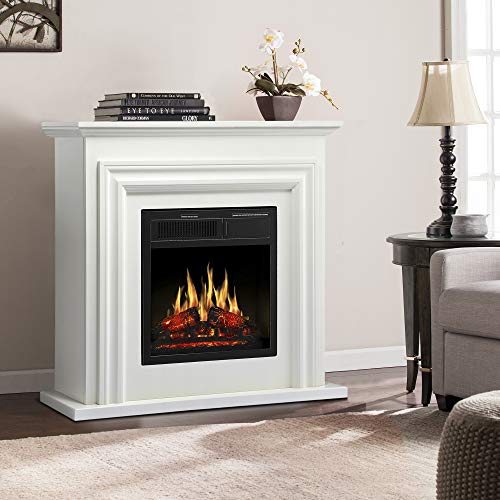How Do You Know If You're Set For Fireplaces And Stoves
The Comprehensive Guide to Fireplaces and Stoves
Fireplaces and stoves have been integral to human civilization for centuries, serving as a source of heat, light, and comfort. These home appliances are available in numerous types and have actually developed over the years, accommodating diverse preferences and technological developments. Best Fireplace USA supplies a helpful summary of fireplaces and stoves, highlighting their types, advantages, upkeep ideas, and setup considerations.
Kinds of Fireplaces
The world of fireplaces is rich and differed. Here are the most common types:
Wood-Burning Fireplaces:
- Traditional and charming.
- Requires seasoned wood and regular upkeep.
- Produces an enjoyable scent and crackling sound.
Gas Fireplaces:
- Offer benefit and ease of usage.
- Offered in vented and vent-free alternatives.
- More efficient and cleaner than wood-burning choices.
Electric Fireplaces:
- Provide atmosphere without the requirement for a chimney.
- User-friendly with push-button control options.
- Can be used as a supplemental heat source.
Pellet Stoves:
- Use compressed wood pellets as fuel.
- Extremely efficient and eco-friendly.
- Typically geared up with thermostats for temperature level control.
Ethanol Fireplaces:
- Utilize bioethanol fuel, making them portable.
- Do not require venting, which permits for versatile placement.
- Produce a practical flame with minimal smoke.
Outdoor Fireplaces:
- Designed for outdoor settings; can be wood or gas-burning.
- Great for entertaining and enhancing yard aesthetic appeals.
- Often constructed from stone, brick, or metal.
Advantages of Fireplaces and Stoves
Integrating a fireplace or stove into a home uses numerous advantages:
- Aesthetic Appeal: Fireplaces serve as striking focal points in any room, including warmth and character to home design.
- Increased Property Value: Homes with functional fireplaces tend to have higher resale values.
- Energy Efficiency: Modern fireplaces and stoves are designed to be more energy-efficient, which can cause minimized heating costs.
- Backup Heating Source: In case of power blackouts, wood-burning and gas fireplaces can work as necessary heating sources.
- Versatile Heating Solutions: Different types of fireplaces accommodate different heating requirements and way of lives, from cozy ambiance to efficient heating.
Kind of Fireplace/Stove
Fuel Source
Efficiency Rating
Upkeep Level
Wood-Burning
Wood
Moderate
High
Gas
Natural gas/LP
High
Low
Electric
Electrical energy
High
Very Low
Pellet
Wood pellets
High
Moderate
Ethanol
Bioethanol
Moderate
Low
Outdoor
Wood or gas
Moderate
Varies
Maintenance Tips
Proper maintenance extends the life of fireplaces and stoves, guaranteeing security and efficiency. Here are some important pointers:
Regular Cleaning:
- Wood-burning fireplaces need to be cleaned up after a full season of use to get rid of soot and creosote.
- Gas fireplaces require periodic evaluation of the burner and vents.
Routine Inspections:
- Have chimney sweeps perform annual examinations to determine clogs or structural damage.
- Inspect the seals and gaskets on gas systems to prevent leaks.
Fire Safety:
- Install smoke and carbon monoxide detectors in homes with fireplaces or stoves.
- Keep a fire extinguisher near the fireplace or stove for emergencies.
Usage Quality Fuel:
- For wood-burning units, constantly use skilled wood; avoid dealt with or painted wood.
- When utilizing pellets, guarantee they are saved effectively to prevent moisture absorption.
Manage Airflow:
- Keep vents and ducts clear to promote effective ventilation and air flow.
- Think about using glass doors or screens to decrease debris and ash in the home.
Installation Considerations
Setting up a fireplace or range needs careful factor to consider of numerous aspects:
Location:
- Choose an area that enables proper clearance and ventilation.
- Think about the design of your home and the convenience of natural heat circulation.
Building Codes and Permits:
- Check local policies concerning setups and necessary authorizations.
- Engage a professional to guarantee compliance with safety requirements.
Fuel Type:
- Evaluate your fuel options based upon accessibility, expense, and environmental impact.
- If going with gas, ensure existing gas lines can accommodate the new home appliance.
Ventilation:
- Proper venting is important for safety and efficiency, particularly for gas and wood-burning units.
- Consult an expert to identify the very best venting service.
Visual Consideration:
- Select a design that complements your home's interior.
- Think about mantels, surround materials, and colors that match your decoration.
Frequently asked questions
What is the best type of fireplace for heating?
Gas fireplaces are normally more efficient for heating, while wood-burning fireplaces provide more ambient warmth.
How often should I clean my fireplace?
Wood-burning fireplaces should be cleaned a minimum of as soon as a year, while gas fireplaces require less regular attention depending on usage.
Can I set up a fireplace myself?
While some homeowners may attempt DIY installation, it is suggested to employ an expert to guarantee security and compliance with building regulations.
Are electric fireplaces efficient?
Yes, electric fireplaces are very efficient and can act as reliable extra heating sources, particularly in smaller sized areas.
What is the life-span of a fireplace?
The life-span of a fireplace differs depending upon the material, type, and maintenance; however, a well-maintained wood-burning fireplace can last over 30 years.
Fireplaces and stoves stay ageless functions in homes, providing warmth and atmosphere. Understanding the different types, benefits, and maintenance requirements can assist house owners make informed decisions about installation and care. With careful planning and regular upkeep, these devices can boost both the comfort and value of a home for several years to come.
